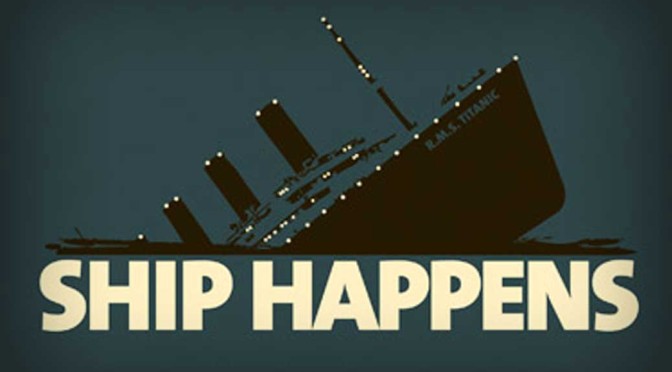By Anupum Pant
Tahir Shah in his book, House of the Tiger King wrote:
“As the head of an expedition, you can’t pussyfoot around being polite to everyone. You have to show your teeth once in a while; a little growling goes a long way.”
It turns out, a little growling can indeed go a long way – Sometimes it can even save your lives. Let’s see how…
Two Stories
Let us consider the two widely studied ship tragedies – Titanic and Lusitania. Here is a brief copied background of both the ship stories (to make it easier for you):
Titanic’s story: Titanic was a British passenger liner that sank in the North Atlantic Ocean on 15 April 1912 after colliding with an iceberg during her maiden voyage from Southampton, UK to New York City, US. The sinking of Titanic caused the deaths of more than 1,500 people in one of the deadliest peacetime maritime disasters in modern history. – Wikipedia
Lusitania’s Story: Lusitania was a British ocean liner, holder of the Blue Riband and briefly the world’s biggest ship. She was launched by the Cunard Line in 1907, at a time of fierce competition for the North Atlantic trade. In 1915 she was torpedoed and sunk by a German U-boat, causing the deaths of 1,198 passengers and crew. – Wikipedia
Differences and Similarities
Similarities: Both of them were British ships and capsized almost during the same time (a three years difference). Both the ships carried a similar distribution of passengers in terms of their age, gender and economic status. Chance of survival for voyagers in both the ships was around 30%.
Differences: One important thing to note about the sinking of Titanic was that after it hit the iceberg, it took about 160 minutes to sink. Whereas Lusitania was hit by a torpedo and it collapsed in 18 minutes. Isn’t that a big difference in time?
Since time taken to sink is the only big difference in both the stories, scientists think that this explains the changed behavior of people aboard, during the last minutes. As a result, it explains the big difference in the kind of people who died in Titanic-tragedy vs. Lusitania-tragedy.
Who died?
In Lusitania, which sank in 18 minutes, many youngsters who ages ranged from 16-35 years, survived. Since, people had no time to think and assemble into social groups, the fittest people were able to push their way out and survive – youngsters who were physically competent, survived.
Whereas Titanic sank in about 160 minutes, it gave people enough time to take into consideration, the social protocols. As a result several men queued up and politely let the women and children go first.
This is the reason, scientists think, more men survived when Lusitania sank. Whereas more women and children survived when Titanic sank.
British boys
on the Titanic, it is calculated that Americans were 8.5 per cent more likely to survive. On the other hand, British passengers were 7 per cent less likely to survive. A big difference! Why?
Australian researchers believe that since British passengers on the Titanic queued up politely to get into the lifeboats, a significantly high number of them died. Also, they think that Americans elbowed their way out, but there is no direct evidence that supports Americans were rude on the ship. If they were, we’ll never know.
Related articles





